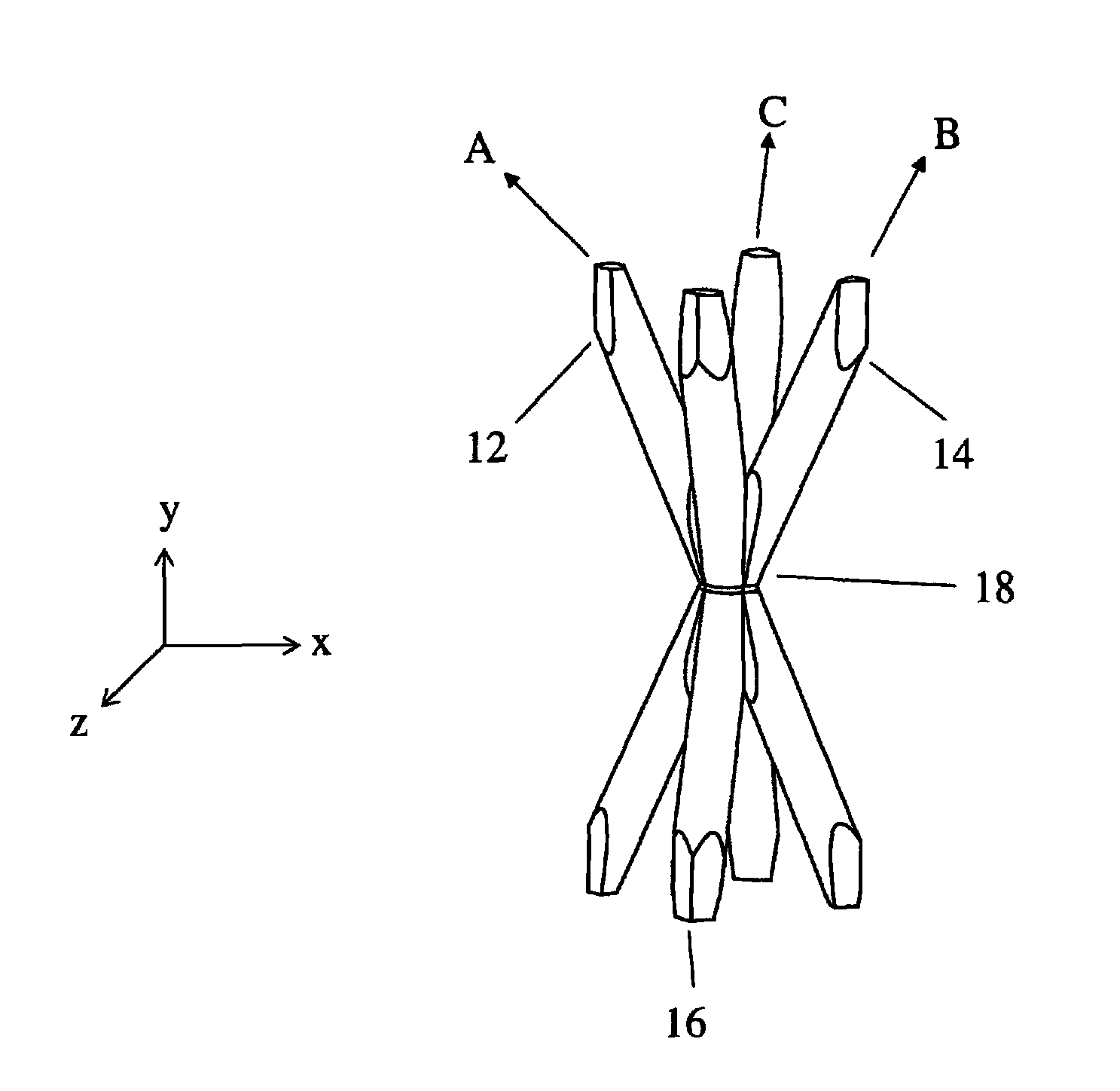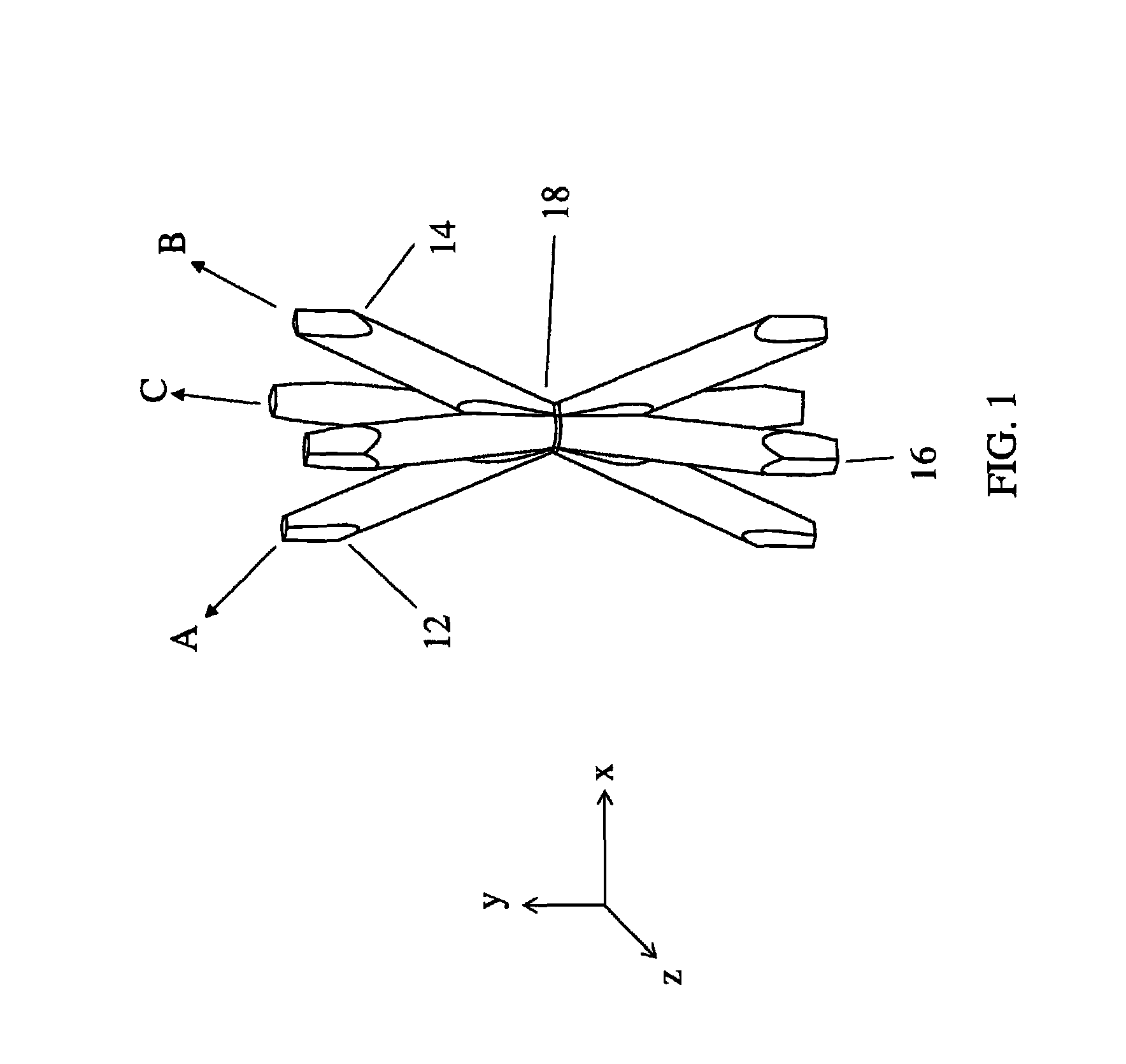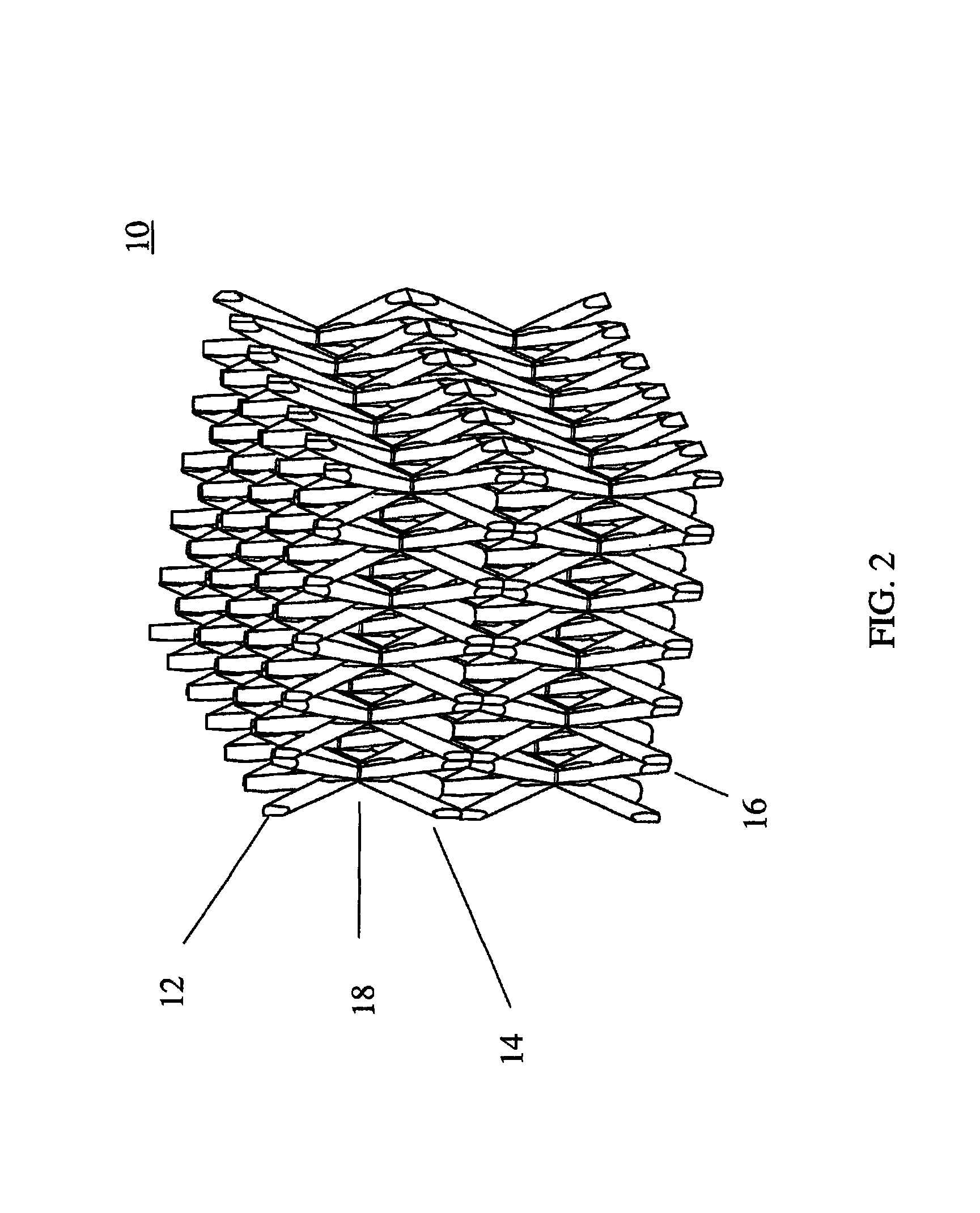Ceramic microtruss
a ceramic foam and microstructure technology, applied in ceramicware, instruments, other domestic objects, etc., can solve problems such as reducing the strength of materials, and achieve the effects of high temperature stability of ceramic foam, light weight, and high strength
- Summary
- Abstract
- Description
- Claims
- Application Information
AI Technical Summary
Benefits of technology
Problems solved by technology
Method used
Image
Examples
example 1
[0072]1. A graphite scaffold (or base structure) weighing 0.068 g is pumped into an oxygen and moisture free glove box.
[0073]2. The scaffold is placed in a 125 mL Parr Acid Digestion Bomb (autoclave) with 2 mL trichlorosilane.
[0074]3. The autoclave is sealed in the glove box.
[0075]4. The autoclave is then removed from the glove box and placed in a 250° C. oven for 12 h.
[0076]5. After 12 h, the autoclave is removed and cooled to room temperature. It is opened in a fume hood, the scaffold is removed, and washed with chloroform to remove residual trichlorosilane. Here, the scaffold is now coated with amorphous SiC.
example 2
[0077]1. A graphite scaffold weighing 0.072 g is pumped into an oxygen and moisture free glove box.
[0078]2. The scaffold and 1.9 mL trichlorosilane is placed in a 4″ long ½″ diameter steel tube. Both sides are sealed with SwageLock end caps in the glove box.
[0079]3. The tube is then removed and placed in a 500° C. oven for 6 h.
[0080]4. After 6 h, the tube is removed and cooled to room temperature. It is cut open in a fume hood and the scaffold is removed and washed with chloroform to remove residual trichlorosilane.
[0081]5. In a tube furnace under flowing N2, the sample is heated at 3° C. / min to 1500° C., held at 1500° C. for one hour, and then cooled at 5° C. / min. Here, the end product was a light gray colored Si3N4 microtruss. FIG. 8 shows the XRD pattern of the microtruss formed according to Example 2. As shown in FIG. 8, the XRD peaks index to either silicon nitride or graphitic carbon, both of which are expected in this microtruss.
Preceramic Polymers
[0082]Preceramic polymers ma...
example 3
[0083]1. A graphite scaffold is dried in an oven at 100° C.
[0084]2. A 1:1 vol:vol solution of RD-633 by Starfire Systems and OS-20 by Dow Corning was made.
[0085]3. The graphite scaffold is soaked in the RD-633 solution. It is removed and then placed in a N2 purged tube furnace.
[0086]4. The furnace is heated at 1° C. / min to 850° C., and then held at 850° C. for 1 h. The furnace is then cooled at 5° C. / min.
[0087]5. Steps 3 & 4 are repeated two times. That is, to fill the scaffold with ceramic, it is impregnated and heated for multiple cycles.
PUM
| Property | Measurement | Unit |
|---|---|---|
| axial diameter | aaaaa | aaaaa |
| symmetrical angles | aaaaa | aaaaa |
| symmetrical angles | aaaaa | aaaaa |
Abstract
Description
Claims
Application Information
 Login to View More
Login to View More - R&D
- Intellectual Property
- Life Sciences
- Materials
- Tech Scout
- Unparalleled Data Quality
- Higher Quality Content
- 60% Fewer Hallucinations
Browse by: Latest US Patents, China's latest patents, Technical Efficacy Thesaurus, Application Domain, Technology Topic, Popular Technical Reports.
© 2025 PatSnap. All rights reserved.Legal|Privacy policy|Modern Slavery Act Transparency Statement|Sitemap|About US| Contact US: help@patsnap.com



